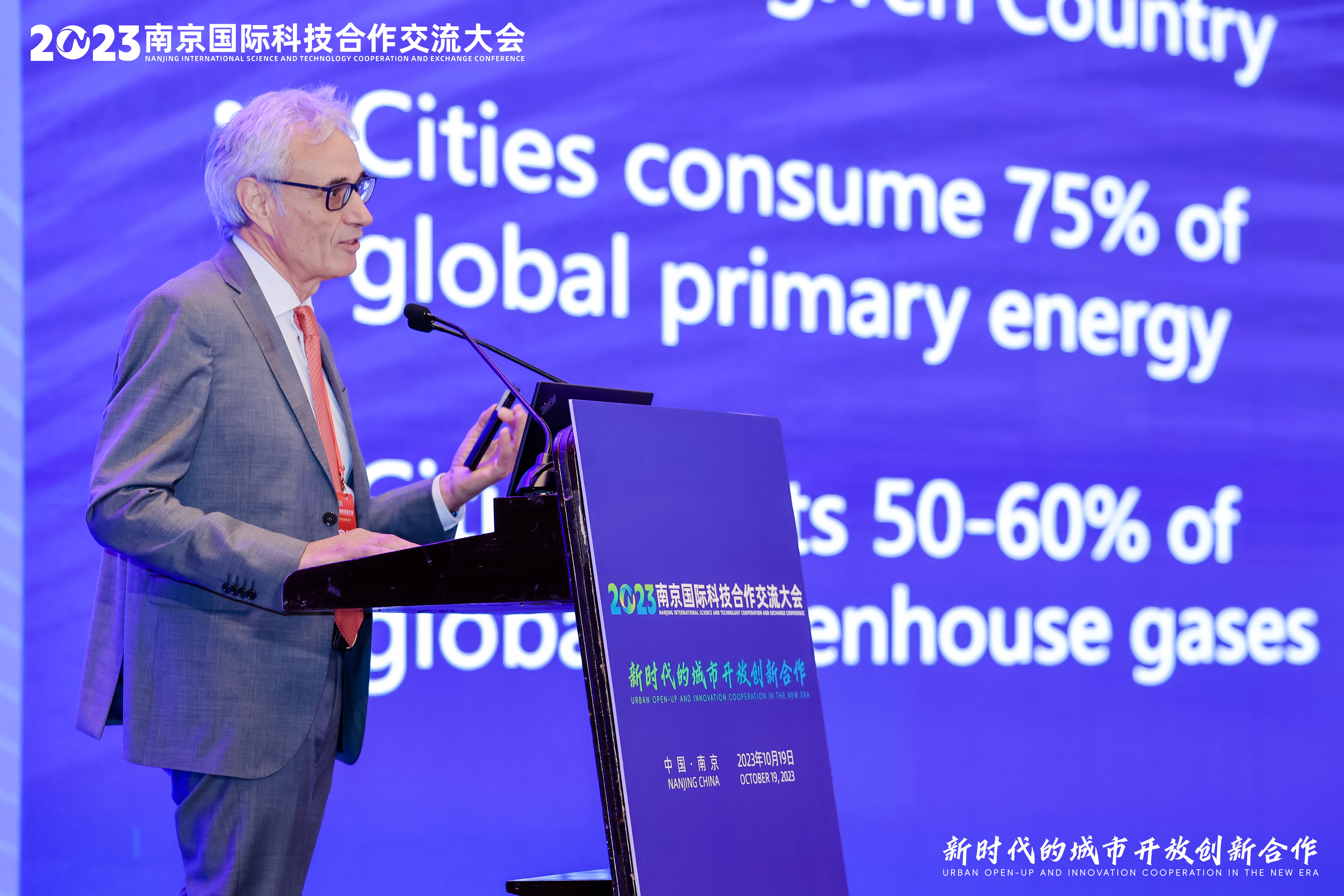
Lorenzo Gonzo, senior advisor of Bruno Kessler Foundation for international collaboration makes presentation on redefining urban living standards at Nanjing International Science and Technology Cooperation and Exchange Conference. (PHOTO: Foreign Talent Research Center)
By QI Liming
Openness and cooperation are inherent requirements for promoting scientific and technological progress. It is through sci-tech innovation that we can jointly explore ways and means to solve major global issues and meet the challenges of our time. At the recent Nanjing International Science and Technology Cooperation and Exchange Conference, officials, counselors, entrepreneurs and scholars from home and abroad gathered to discuss ways to seek more opportunities in cooperation and how to specifically achieve that.
Safe and sound mechanism
China has become an important participant in international cutting-edge innovation and a pivotal contributor to jointly solving global problems, according to Zhuang Jia, deputy director of China Science and Technology Exchange Center.
"It is all the more necessary for the international community to further strengthen cooperation and build a long-term, stable and diversified mechanism and platform for exchanges and cooperation," she explained.
Meanwhile, Wang Yuanhua, deputy director of Nanjing Municipal Science and Technology Bureau, told the conference that for joint R&D, it is essential to effectively transfer sci-tech achievements and build a transformation system for technology transfer. "We need to make every effort to build the talent resources pooling system, full chain innovation ecosystem, and international sci-tech network of cooperation," said Wang.
Lorenzo Gonzo, senior advisor of Bruno Kessler Foundation for international collaboration, shared opinions on redefining urban living standards by harnessing technology. Enhancing mobility and transportation, revolutionizing infrastructure and enhancing livability and health are vital to global development. "Enhancing technology is not just about gadgets or infrastructure, but [more] about fundamentally improving the quality of lives in cities. City planners, technologists and the public should collaborate and innovate together, harnessing technology's vast potential to create a future where cities are hubs of sustainability, health and harmony." said Gonzo.
Sci-tech achievements with partnerships
Research cooperation and tech based partnerships with China are for the interests of both sides, said Adrian Gutiérrez, science and technology counselor of the Spanish Embassy in China.
Gutiérrez believes that today there is no hesitation of the global nature of science innovation, and how international cooperation has valued skills in order to find solutions to challenges that our societies are confronted with. The sci-tech collaboration between Spain and China is a vivid example, he added.
Activities such as resource docking, international technology transfer, and innovation and entrepreneurship competitions are the catalyst to stimulate the vitality of innovation and competition, and help sci-tech achievements in the lab transfer into industrialization in the factory. Making these comments, Sally Capp, the mayor of Melbourne, Australia, added that, "The friendly relations between the cities [of Nanjing and Melbourne], have been extensive and in-depth with fruitful results."
In addition to the advice from macro, meso, and micro levels, Jimmy Yun, fellow of the Australian Academy of Technology and Engineering, said that the sci-tech exchange platform is critical and it's a good way to learn about different modes of cutting carbon emissions. He also spoke about the storage and secondary conversion of hydrogen energy, and the important role of catalysts in this field.
Cultural philosophy integration path exploration, and the pros and cons of AI, which will usher in an era of abundance, was another topic of interest discussed by Andy Mok, senior research fellow of Center for China and Globalization.
Meanwhile, 14 international joint R&D project agreements have been signed at the conference. The unveiling ceremony of the Jiangsu-Hong Kong Youth Innovation and Entrepreneurship Base was also held at the event.
The trio will conduct a series of experiments in fields such as life science, fluid physics, combustion science and materials science. Notably, this is the first time that fruit flies have been taken on a Chinese space mission as experimental subjects. What made scientists choose fruit flies? What experiment will they undergo?
